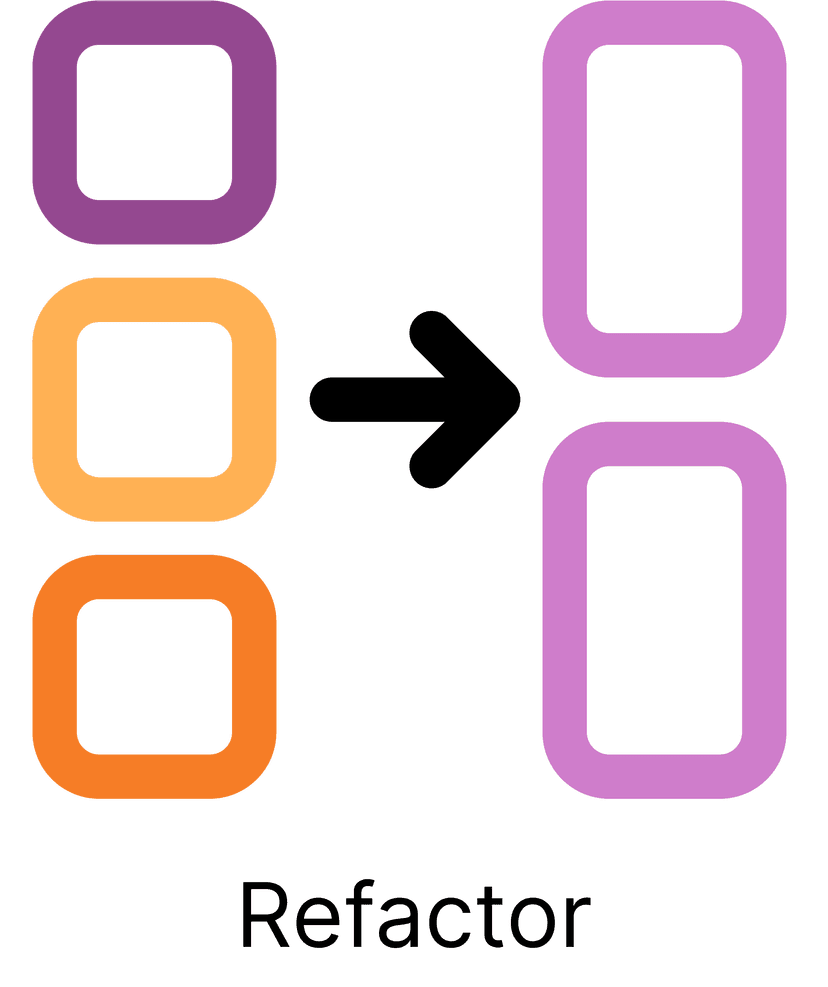Refactor

What is a code refactor?
Definition
Refactoring is the process of restructuring and optimizing existing computer code without changing its external behavior or functionality.
Analogy
Imagine you have a messy room, and you decide to clean and organize it. You might rearrange the furniture, put things in their proper places, and throw away unnecessary items. After the cleanup, the room still serves the same purpose, but it's now more efficient and easier to navigate. Refactoring code is similar to cleaning up a messy room — you're making the code more organized and efficient without changing its purpose.
In other words
Refactoring is the process of improving the structure and efficiency of code without altering its functionality.
Why is refactoring important?
It's one thing to know what refactor is, but that is worthless if you don't know why you should know what a code repository is in the first place. Let's break down the importance of this tech term based on two high-level categories. We'll walk through an explanation as well as provide a score, 1-10, that shows you how much you should care about refactor.
Pre-Product: 1/10
If you do not have a product yet, refactoring might not be a top priority. At this stage, your focus should be on developing your idea and building your product. However, it's still essential to keep refactoring in mind for the future, as it will become increasingly important as your product grows and evolves.
Live Product: 6/10
If you have a live product, refactoring becomes more critical. As your product grows and your codebase expands, it's essential to keep the code clean, efficient, and maintainable. Refactoring helps ensure that your code remains easy to understand, modify, and extend, making it easier for you and your team to add new features, fix bugs, and improve performance.
Use cases of refactoring
So you know what refactor is, by definition. You know if you should care about it or not depending on your situation as a business/company/product. To dig in deeper, we will walk through some tools and processes so we can make sure you really have a solid grasp on refactor.
Code Smells
Code smells are indicators that your code might need refactoring. These can include long methods, large classes, duplicate code, and excessive use of global variables. By identifying and addressing code smells, you can improve the quality and maintainability of your codebase.
Refactoring Techniques
There are various refactoring techniques you can use to improve your code, such as extracting methods, renaming variables, and simplifying conditionals. These techniques help make your code more readable, maintainable, and efficient.
Tools for Refactoring
Several tools can help you with the refactoring process, such as IDEs (Integrated Development Environments) like Visual Studio, IntelliJ IDEA, and Eclipse. These tools often include features like automated refactoring, code analysis, and suggestions for improvements.
Key Takeaways:
- Refactoring is the process of improving the structure and efficiency of code without altering its functionality.
- If you do not yet have a product, refactoring may not be a top priority, but it's essential to keep in mind for the future.
- If you do have a product, refactoring becomes more critical for maintaining and improving your codebase.
- Familiarize yourself with code smells, refactoring techniques, and tools to help you refactor effectively.

